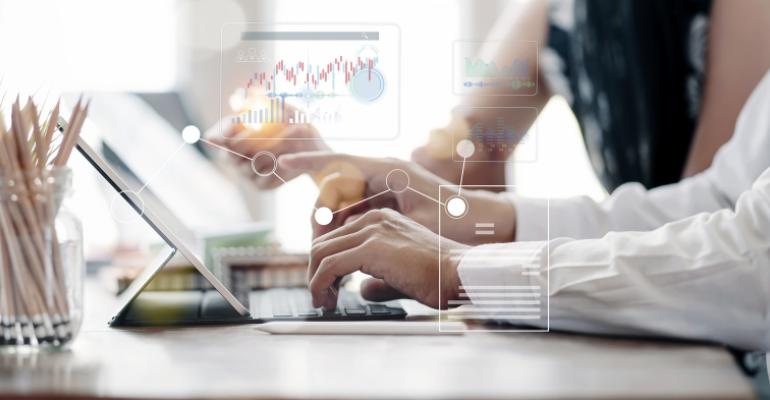Sponsored by

 An interview with Ally Wallace, Managing Director, Global Head of ETF Capital Markets, Morgan Stanley Investment Management
An interview with Ally Wallace, Managing Director, Global Head of ETF Capital Markets, Morgan Stanley Investment Management
Exchange-traded funds (ETFs) are an increasingly popular investment vehicle, but finding the right ETF for a given portfolio — and executing a trade — can be complicated. Advisors at all levels of experience can lean on the support of a capital markets team to trade ETFs more effectively.
We spoke with Ally Wallace, managing director and global head of capital markets at Morgan Stanley Investment Management, about the role capital markets plays in the ETF space and the most important factors in successfully trading ETFs.
Why is the capital markets team important in trading ETFs?
When it comes to trading, the capital markets team is the central point of contact between liquidity providers, custodians and exchanges on one side, and clients on the other. From a client perspective, capital markets’ function is to ensure that when you go out and actually try to buy an ETF there's the ability to access a healthy trading ecosystem and you can have the best client experience possible.
Let’s talk more about the client experience. How do you support advisors when they’re trading ETFs?
We can support advisors in a range of areas. For example, we had a client recently come to us with little to no experience in ETFs, but they were interested in expanding their portfolio to include them. So we gave them a crash course in what an ETF is, how to access liquidity, and when to trade it. So that was a full educational experience on ETF structure.
If the client already has a lot of experience in trading ETFs, we don't need to give them that full ETF education. We focus instead on the execution of the ETF trade. We’re looking to maximize the liquidity of the ETFs and minimize the client’s trading costs.
What should advisors think about before placing an ETF trade?
There are three main considerations: the what, the when and the how. The "what" is making sure you understand the actual ETF and the underlying assets that you’re going to purchase. When you look at the liquidity profile of the ETF on the screen, you’re seeing the on-exchange liquidity, or secondary market volume. That's only one indicator of how liquid an ETF is. Going into the underlying assets and analyzing that liquidity, gives you a better understanding of the overall liquidity of the ETF for the long term.
The "when" is another very important factor. You’re going to look at different time zones of the underlying assets in the ETF. If you are looking to trade an ETF that has a lot of Europe exposure, for example, you want to ensure that you’re accessing the underlying assets when there is access to the most liquidity. We’d recommend you trade that ETF during the New York morning session when the European market is still open.
Last is the “how.” Clients have different benchmarks and different ways they are looking to invest. We’re working with them to ensure that when they place the trade, they consider how they’re doing it. We want to ensure that we’re meeting their overall needs from a benchmark perspective.
What’s the best way advisors can work with you?
As I mentioned earlier, we’re kind of the center point. We have access to all the different groups across our organization. We’re in constant contact with our sales team as well as our ETF specialists. So, if clients already have coverage from a Morgan Stanley sales contact, they can feel free to reach out.
We will be available to answer any questions or get on the phone for a deeper conversation. If you don't have a Morgan Stanley contact, we have a number on our ETF website. Any questions you call will be directed to us. The capital market team’s function is really here to help clients with execution and ongoing education. They should feel empowered to use it.





